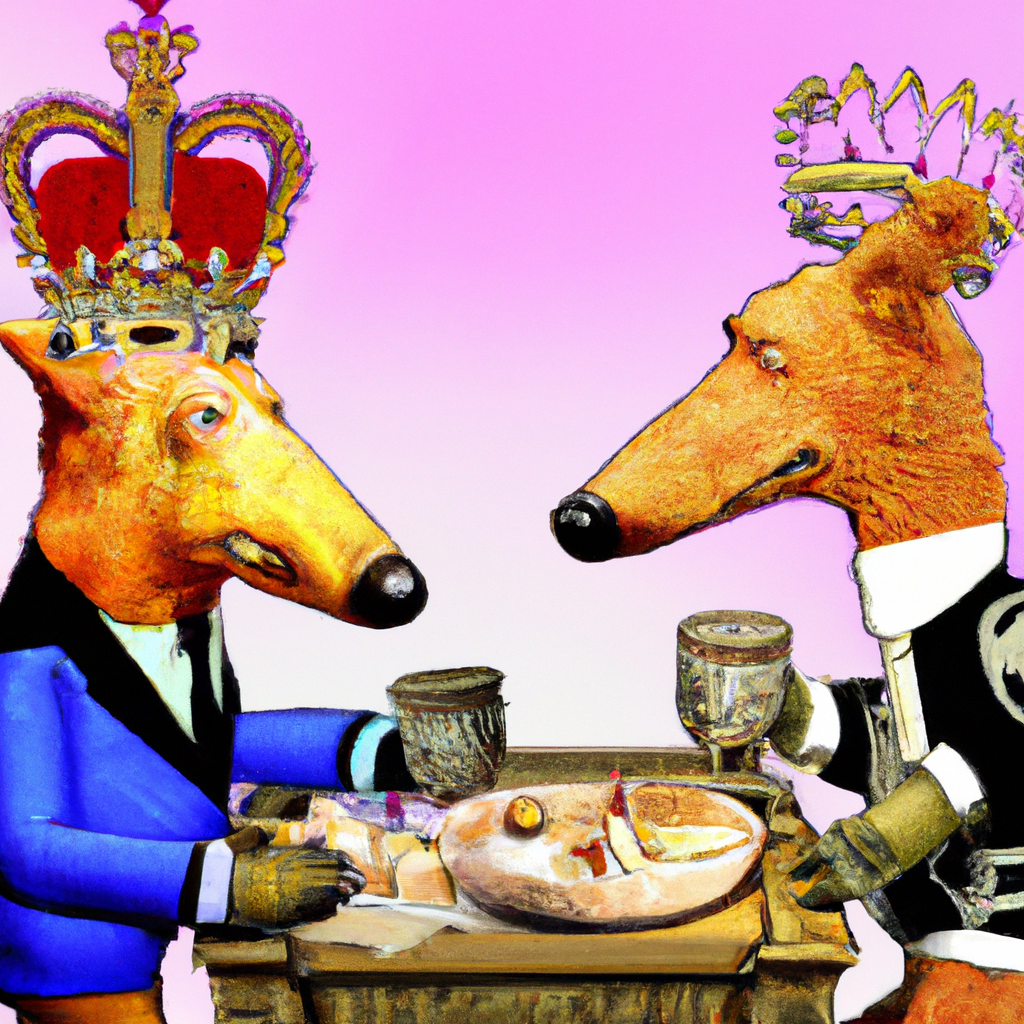
In an audacious display of protest that marries British pop culture with political commentary, animal rights activists in New York City have targeted a portrait of King Charles III, adorning it with stickers of the beloved claymation characters, Wallace and Gromit. The act is not merely a whimsical gesture but a profound emblem of dissent against the monarchy’s perceived stance on animal rights issues.
The portrait, originally a respectful homage displayed prominently in a local British-themed pub, transformed overnight into a canvas of protest. Activists from the group, Animal Rights, skillfully overlaid the image of Wallace, the eccentric inventor from the popular British series, over the face of the monarch. This juxtaposition, playful yet piercing, sends a powerful message about the perceived incongruities in the royal policies towards animal welfare.
The activists' choice of Wallace, a character renowned for his gentle, compassionate nature and whimsical problem-solving, serves as a stark contrast to the solemnity and formality traditionally associated with royal figures. This subversion of imagery invites observers to question and critique the underlying values and actions of leadership, particularly concerning the ethical treatment of animals.
Such daring visual statements are not merely acts of vandalism; they are the lingua franca of modern protest. Through the intelligent use of iconography familiar to both British and international audiences, the activists foster a dialogue that transcends geographical and cultural barriers. This event in New York echoes a global sentiment that seeks to hold leaders accountable, urging them to align their actions with the growing public concern for animal rights and welfare.
The dialogue opens up broader questions about the role of visual culture in protest movements. As New York City stands as a global hub for cultural discourse and activism, actions such as these resonate deeply within its diverse communities. They contribute to an ongoing, evolving conversation about authority, representation, and the power of art as a form of resistance.
As the city with its rich tapestry of artistic expression and social activism watches, the incident serves as a reminder of art's transformative power, turning everyday objects into potent symbols of societal values and challenges. This unique blend of irreverence and political discourse captures the essence of New York's vibrant cultural landscape, where art and life continually intersect in the most unexpected of ways.